When I first looked at some pages of Arata: The Legend over at Viz’s Shonen Sunday site, my first thought was that someone was really trying for a Yuu Watase vibe, until I looked at the credits and realized that person was the venerable shôjo manga-ka herself, making her shônen magazine debut. (I’m not very bright.) For whatever reason, I tend to enjoy comics for boys created by women, but the first couple of chapters of Arata didn’t really grab my attention. Having read the first print volume, my attention is newly grabbed. This is some snappy stuff.
I’ve liked a lot of Watase’s manga. Alice 19th and Imadoki! (both from Viz) are particular favorites. (I rather intensely disliked Absolute Boyfriend, also from Viz, but that’s neither here nor there.) I tend to like her better when she keeps things lively, and that seems to be one of the guiding principles behind Arata. Plot twists come quickly and cleanly, and they promise lots of interesting developments in future chapters.
The series opens with a boy named Arata forced into drag to fulfill a family obligation to the local princess. This goes rather badly wrong when the princess’s ostensible protectors try and murder her and pin the blame on Arata. He flees a bit farther than he intended, winding up switching places (temporal and dimensional, apparently) with another boy named Arata.
Modern Arata is a bully-magnet in contemporary Japan whose plans for a happy high-school life are undone when one of his chief junior-high tormentors transfers into his class. Maybe life in a mysterious dimension being chased by murderous godly swords-persons isn’t so bad? Okay, it probably is so bad, as Watase can be rather brutal to her protagonists, but both Aratas seem willing to try and make the best of their respective situations.
It’s a great set-up for an action fantasy, and I particularly like the parallel fish-out-of-water situations. Both Aratas are appealing types, and they’re surrounded by the expected range of endearing-to-menacing supporting characters. (There’s also a bossy granny, and bossy grannies make just about every manga better.)
Since this is Watase we’re talking about, you know it’s going to be drawn well. Her work is always detailed but clean, and her action sequences seem a little crisper than usual, if anything. It’s something of a running joke that all of her male characters look the same, but there’s an appealing variety here. Maybe having two male leads inspired her to stretch a bit more. Her designs for the fantasy world are lush and eye-catching, and it’s fun to watch a guy in a school uniform dash around in them.
In spite of its shônen magazine home, this is really just Watase doing what she does really well – telling the story of a likeable, average person thrust into an alien situation and finding that they have a challenging destiny to fulfill. I think fans of her shôjo work will like it a lot, and I hope readers who wouldn’t touch shôjo with a ten-foot pole will discover a talented creator.
(This review is based on a complimentary copy provided by the publisher.)






 It’s tough to pick a book of the week, as there’s interesting material in varied formats, but I ultimately have to settle on
It’s tough to pick a book of the week, as there’s interesting material in varied formats, but I ultimately have to settle on  Now, don’t get me wrong. I’m a fan of the books in Viz’s Signature line and an admirer of the imprint in general. I honestly can’t think of one I don’t at least enjoy. That said I do question the wisdom of unleashing quite this much product on the market at once. In addition to the aforementioned volume of Real, there’s
Now, don’t get me wrong. I’m a fan of the books in Viz’s Signature line and an admirer of the imprint in general. I honestly can’t think of one I don’t at least enjoy. That said I do question the wisdom of unleashing quite this much product on the market at once. In addition to the aforementioned volume of Real, there’s 
 I enjoyed
I enjoyed  Viz sent out
Viz sent out 
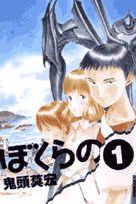

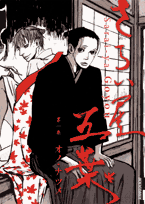
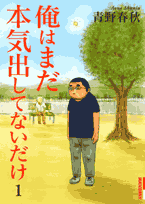
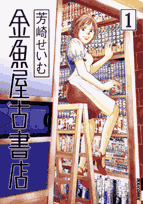
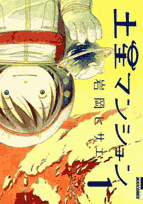
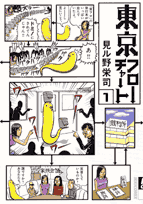

Sunday, Sunday, SUNDAAAAAAAAAAY!
I’m taking a week off from the license requests. Sometimes you just have to try and catch up with what’s actually available, and Viz isn’t making it easy with all of the freebies on its SIGIKKI and Shonen Sunday sites. It’s the end of the week, and I’m kind of fried, so I’ll take a look at the presumably more lighthearted shônen fare of the latter.
First of all, I have to say that I like the way Viz is assembling these animated trailers. They look nice; Kate Dacey used the one for Daisuke Igarashi’s Children of the Sea in a recent post, and it’s very effective. Second, I don’t really have anything to add to what I’ve already said about Rumiko Takahashi’s Rin-Ne; it’s solid entertainment, but it has yet to change my life. Third, I still don’t like reading comics on a computer, but Viz’s platform is simple enough to use and readable in scale and resolution, at least on my screen.
Now, on to the new series:
In this one, a young man must pretend to be a young woman to fulfill his clan’s obligation to provide princess-protectors to his nation. The ruse goes badly wrong in some unexpected ways, and, judging by the series description, further drastic twists are pending. There’s not much else I can say about it at the moment, other than it’s wonderfully drawn, like all Watase series, and that I already like it loads better than her last licensed outing, Absolute Boyfriend (Viz). That’s good enough for a start.